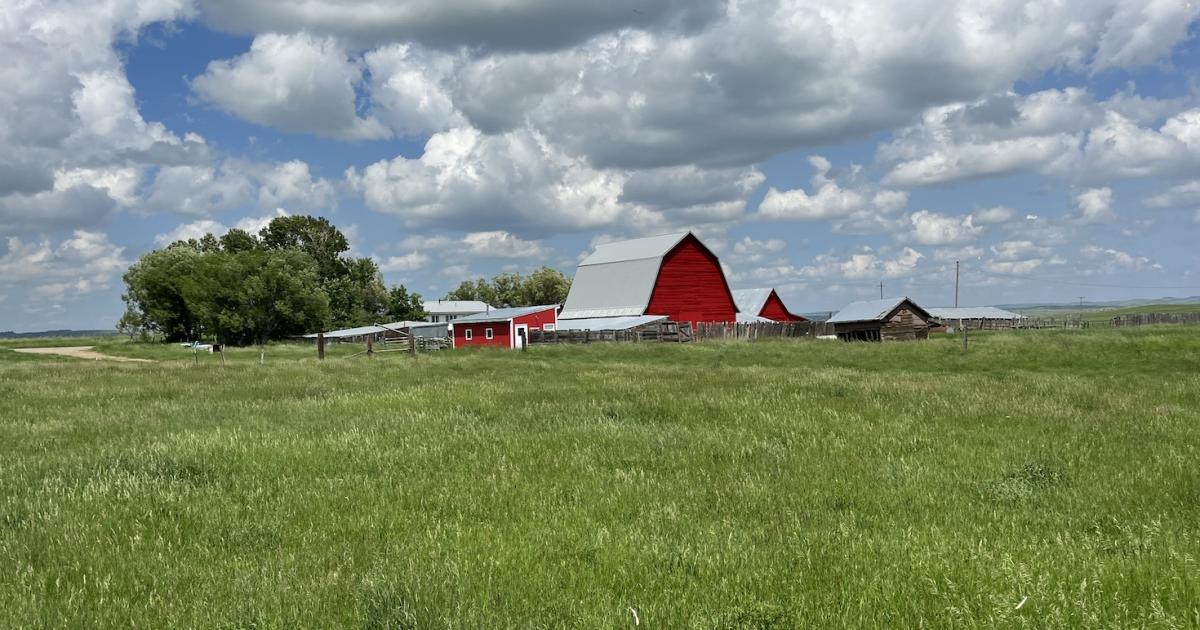
Regenerative agriculture initiatives have saturated food companies’ climate strategies with a questionable narrative propeller: While agriculture is a significant emissions source, soil on farmland is a viable carbon sink when well managed.
While regenerative practices can have many benefits, soil carbon sequestration is often touted first because of the financial incentives carbon credit markets can offer farmers.
However, accurately measuring the changes in soil carbon stocks has historically been expensive and intensive. Scientists have robustly observed soil carbon dynamics on a small percentage of agricultural lands. Most MRV (monitoring, reporting and verification) solutions for quantifying the climate impacts of regenerative practices rely on estimation models from scientific literature that often note the uncertainty around the accuracy of such approaches.
Currently, no standardized agreed-upon methodology is underlying all MRV protocols, and many startups touting proprietary software are in the market. Not all these MRV solutions are created equal. Food companies that skip the foundational step of measuring soil carbon on farmlands on the ground, or rely on MRV models that are not the right fit, risk investing in practice changes that may not lead to sequestration.
Given the urgency of food system transformation, I’m concerned about the validity of MRV’s purported verifications and the knock-on effects of potentially unsubstantiated climate claims. However, recent technological developments and government actions suggest MRV is undergoing a metamorphosis to MMRV. MMRV is an improved version of the approach that adds measurement (the first M) to the traditional monitoring, reporting and verification framework. Increasing accurate measurement will enable better farmland management and more impactful investments.
Spotty science behind soil carbon sequestration
The 2007 IPCC report suggested soil carbon sequestration on agricultural lands could be a silver bullet solution with the potential to mitigate half of all agricultural emissions. It began dominating investments in agricultural climate mitigation. But there were serious issues.
Scientists at the World Resources Institute published concerns from an in-depth review of the IPCC’s estimates in 2020. They couldn’t verify the estimates of soil carbon sequestration as they found a dearth of documentation on the variables and assumptions behind the model. Since then, progress has been slow. Last year the Environmental Defense Fund highlighted the uncertainty in the science underlying soil carbon sequestration estimations given the measurement challenges. Earlier this year, Stanford University called for progress on climate-smart agriculture data to underpin federal investments.
MRV models may miss the mark
At their core, models provide an estimate based on observations made elsewhere. They are extrapolations. They are great at describing things that have been observed before. But we have only observed soil carbon dynamics on a tiny percentage of agricultural lands globally because the measuring has traditionally been prohibitively expensive. Many MRV solutions on the market use proprietary software calibrated on biogeochemical models to estimate the carbon impact instead of actual field measurements.
Different MRV models have different parameters and methods of addressing critical issues such as uncertainty, permanence, additionality, reversals and leakage. These differences mean that the outputs of different models are not equivalent.
Researchers try to use models that closely resemble real-life specific environmental and socioeconomic conditions. But the accuracy of a model’s estimation depends on how closely the model’s assumptions match the on-the-ground circumstances of a particular farm.
Digging toward soil carbon clarity
As regulators, scientists and investors across the food system increasingly scrutinize corporate climate claims, they are becoming more aware of the current uncertainties. They increasingly demand better data (such as on-the-ground soil testing) and more specificity of estimations used in climate calculations.
For example, the Cool Farm Alliance (an industry coalition that includes key agri-food companies such as ADM, Cargill, Ahold Delhaize and Unilever and promotes regenerative agriculture transitions) announced last week it is adapting the Cool Farm Tool’s calculator, chiefly calibrated on North American- and European-based data, to the Australian context. The announcement calls for greater region-specific climate assessments to ensure more accurate reporting and hopes this change is a step in that direction.
There are now soil carbon measurement tools, such as Yard Stick’s in-field spectroscopy probe, to accelerate this trend. The company is commercializing a measurement approach pioneered by Cristine Morgan, chief scientific officer of the Soil Health Institute. The technology measures soil carbon stocks with a hand-held probe that enables more specific and accurate data. Such detailed measurement is the foundation for transitioning from MRV to more accurate MMRV approaches. As a soil measurement service (the company is not selling the technology as a product), Yark Stick claims to be 90 percent cheaper than traditional soil sample lab testing with greater precision.
Government actions accelerating progress
The USDA has been working on accelerating on-farm climate-smart practices for a few years. In fact, Yard Stick will be providing its measurement services for six USDA-funded Partnerships for Climate Smart Commodities to assess soil carbon outcomes in beef, agroforestry and biofuel value chains. And last week, the USDA doubled down on its investments in MMRV systems by announcing it will use $300 million in Inflation Reduction Act funding to create a monitoring and data collection network to determine how much carbon can be captured by these practices. This project represents a crucial step toward securing independent, third-party assurance of soil carbon claims.
Meanwhile, a soil health law requiring standardized monitoring methods of soil health across the European Union may soon join the flurry of sustainability reporting regulations coming out of the bloc. Together, these laws incentivize traceability along global supply chains and the accurate reporting of corporate climate change impacts.
Despite soil carbon’s uncertain climate mitigation benefits, regenerative management changes are still significant. The improvements in soil health deliver economic benefits to farmers through increased crop resilience, higher yields and lower input costs on fertilizers and herbicides. But if food companies and the carbon markets want to put most of their attention toward soil carbon sequestration, then we need better measurements that will clarify the actual climate impacts.
- SEO Powered Content & PR Distribution. Get Amplified Today.
- PlatoData.Network Vertical Generative Ai. Empower Yourself. Access Here.
- PlatoAiStream. Web3 Intelligence. Knowledge Amplified. Access Here.
- PlatoESG. Automotive / EVs, Carbon, CleanTech, Energy, Environment, Solar, Waste Management. Access Here.
- BlockOffsets. Modernizing Environmental Offset Ownership. Access Here.
- Source: https://www.greenbiz.com/article/what-it-takes-get-clarity-soil-carbon
- :has
- :is
- :not
- 2020
- 7
- 8
- 90
- a
- About
- accelerate
- accelerating
- accuracy
- accurate
- accurately
- across
- Act
- actions
- actual
- address
- addressing
- Adds
- Agricultural
- agriculture
- All
- Alliance
- along
- an
- and
- Announcement
- appeared
- approach
- approaches
- ARE
- around
- article
- AS
- assess
- assessments
- assumptions
- assurance
- At
- attention
- Australian
- aware
- based
- BE
- because
- becoming
- Beef
- been
- before
- began
- behind
- benefits
- Better
- but
- by
- Calls
- CAN
- captured
- carbon
- Carbon Sequestration
- Cargill
- chains
- challenges
- change
- Changes
- cheaper
- chief
- circumstances
- claims
- clarity
- Climate
- Climate change
- climate crisis
- closely
- collection
- coming
- Companies
- company
- concerned
- conditions
- Connect
- context
- continue
- Cool
- Core
- Corporate
- Costs
- could
- create
- created
- credit
- crisis
- critical
- crop
- crucial
- Current
- data
- Defense
- deliver
- Demand
- depends
- detailed
- Determine
- developments
- dialogue
- differences
- different
- direction
- documentation
- doubled
- down
- dynamics
- Earlier
- Economic
- EDF
- effects
- elsewhere
- Emissions
- enable
- enables
- ensure
- environmental
- equal
- Equivalent
- estimate
- estimates
- European
- european union
- Every
- example
- expensive
- fact
- farm
- farmers
- farmland
- Federal
- few
- field
- financial
- First
- fit
- food
- For
- found
- Foundation
- Framework
- from
- FT
- fund
- funding
- get
- given
- Global
- Globally
- Government
- great
- greater
- Ground
- Half
- Have
- Health
- higher
- Highlighted
- historically
- hopes
- How
- However
- HTML
- HTTPS
- if
- Impact
- impactful
- Impacts
- improved
- improvements
- in
- in-depth
- Incentives
- incentivize
- includes
- increased
- increasing
- increasingly
- independent
- inflation
- initiatives
- input
- instead
- Institute
- investing
- Investments
- issues
- IT
- ITS
- join
- jpg
- Key
- lab
- Lab Testing
- lands
- Last
- Last Year
- Laws
- lead
- leaders
- LEARN
- literature
- lower
- made
- managed
- management
- many
- Market
- Markets
- Match
- May..
- mean
- measurement
- measurements
- measures
- measuring
- Methodology
- methods
- million
- Mitigate
- mitigation
- model
- models
- monitoring
- more
- Morgan
- most
- much
- NARRATIVE
- Need
- network
- news
- no
- node
- North
- note
- now
- observed
- Oct
- of
- offer
- Officer
- often
- on
- only
- or
- originally
- out
- outcomes
- parameters
- part
- particular
- percent
- percentage
- pioneered
- Place
- plato
- Plato Data Intelligence
- PlatoData
- potential
- potentially
- practice
- practices
- Precision
- probe
- Product
- Progress
- project
- promotes
- proprietary
- protocols
- provide
- providing
- published
- put
- recent
- reduction
- regenerative
- Regenerative Agriculture
- rely
- Reporting
- represents
- resilience
- Resources
- review
- right
- Risk
- s
- San
- San Jose
- Science
- scientific
- scientists
- securing
- Selling
- sequestration
- serious
- service
- Services
- significant
- Silver
- since
- SIX
- slow
- small
- smart
- socioeconomic
- Software
- soil
- solution
- Solutions
- Soon
- Source
- specific
- specificity
- stanford
- Stanford university
- Startups
- Step
- Stick
- Still
- Stocks
- subscribe
- such
- suggest
- supply
- Supply chains
- Sustainability
- system
- Systems
- takes
- taking
- technological
- Technology
- Testing
- than
- that
- The
- the world
- their
- then
- There.
- These
- they
- things
- third-party
- this
- this year
- thousands
- Through
- thursday
- to
- together
- tools
- touted
- toward
- traditional
- traditionally
- Transformation
- transitioning
- transitions
- Trend
- try
- Uncertain
- uncertainties
- Uncertainty
- undergoing
- underlying
- underpin
- unilever
- union
- university
- urgency
- usda
- use
- used
- validity
- value
- variables
- Verification
- verifications
- verify
- version
- viable
- want
- we
- week
- WELL
- were
- What
- when
- while
- will
- with
- working
- world
- year
- years
- yields
- Your
- zephyrnet










